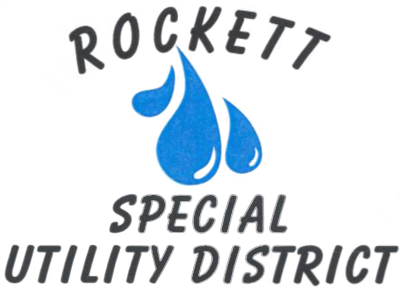To serve you better, we've assembled a list of our customers' most frequently asked questions. If you don't find your answer here, feel free to contact us.
How could I have used this much water?
You could possibly have a leaky toilet or faucet that's difficult to detect. Toilets account for nearly 30% of water used by a typical single-family home. Please visit EyeOnWater to view and track your consumption.
What do I do if I am experiencing low pressure?
Check your meter and the surrounding area for possible leaks. Next, call our office and report low pressure for your area.
Why is my water discolored?
A repair could have been completed recently allowing air to enter the line, causing the milky look. Flush your toilets, bathtubs and faucets until your water clears. If it doesn't clear with minor indoor flushing, contact Rockett SUD at (972) 617-3524, so we are able to determine whether additional flsuhing in your area is required.
What chemicals does our utility district add to the water?
Only chemicals that are approved by the National Safety Foundation for treatment of drinking water. Please visit our Water Quality Report page for further information.
My water tastes, looks, and smells funny. Is it safe to drink?
All public water systems are required to maintain a minimum chlorine level of 0.2 mg/L (tested at the end of each line) by state law. Systems that use chloramine as a disinfectant must maintain a level of 0.5 mg/L by state law. Our disinfectant levels are tested daily to ensure safety.
Why does debris come out of the faucet when running hot water?
Most likely your water heater needs to be flushed. CAUTION: Most manufacturers recommend hiring a professional to flush your water heater. If you plan on doing this yourself, read the owner's manual to keep from being hurt and or damaging the water heater.
Why do I have a previous balance when I know I sent in my payment?
We may have received your payment after the due date or we may not have received it at all. Call our office and we will help you solve the problem.
What is a “free chlorine conversion”?
A free chlorine conversion is a process by which a water system periodically switches its disinfection process from chloramines (a combination of chlorine and ammonia) to free chlorine in order to improve the long term quality of its drinking water.
Why is Rockett SUD implementing a “free chlorine conversion”?
To improve the overall water quality in our distribution system.
Are “free chlorine conversions” a common practice among water systems?
Yes. This is a common industry standard for preventative maintenance in drinking water distribution systems. Many utilities throughout the state and country that use chloramines for their primary distribution disinfectant convert to free chlorine on an “as needed” basis. The Environmental Protection Agency (EPA) and the Texas Commission on Environmental Quality (TCEQ) endorse and support this procedure.
How long will the “free chlorine conversion” last?
The duration of the “free chlorine conversion” will be approximately 30 days.
Does the “free chlorine conversion” pose any health risks? Will the water be safe to drink and use?
The process is entirely safe and poses no health risks to customers. The water is safe to drink and customers can use the water as normal.
However, the change to chloramines can cause problems to persons dependent on dialysis machines. A condition known as hemolytic anemia can occur if the disinfectant is not completely removed from the water that is used for the dialysate. Consequently, the pretreatment scheme used for the dialysis units must include some means, such as a charcoal filter, for removing the chloramine prior to this date. Medical facilities should also determine if additional precautions are required for other medical equipment.
I have a fish tank. How will it affect my fish?
Chloraminated water may be toxic to fish. If you have a fish tank, please make sure that the chemicals or filters that you are using are designed for use in water that has been treated with chloramines. You may also need to change the type of filter that you use for the fish tank.
Why all the flushing?
Rockett SUD must directional flush to maintain clear water for our customers and to ensure the free chlorine conversion has made it to the far reaches of our distribution system. Flushing should significantly subside after the termination of the conversion.
My water has a strong chlorine smell. What is going on?
A chlorine smell is very normal during the conversion period, as the disinfectant is transitioning from chloramines to free chlorine. Chlorine concentrations maintained during the conversion will be well within TCEQ and EPA standards and will be entirely safe to consume and use as normal.

